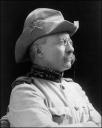Was it World War One and World War Two? . . . or WW6 and WW7?
First, a bit of a rant. I’m currently reading three books, one each on the American Revolution, World War One, and World War Two. I started this post thinking I would do a book review of at least one of them. But instead, I’ve produced a longer excursion in “setting the context.” I think its a useful piece all by itself. Let me know what you think. Book reviews to follow in later posts.
Calling the conflict that occurred in Europe between 1914 and 1919 the “First World War” is completely illogical. From 1689 to 1815 there were a series of five global conflicts – all fought between England and her allies and France and hers.
1689 – 1697 King Williams War / War of the League of Augsburg
1702 – 1713 Queen Anne’s War / War of the Spanish Succession
1744 – 1748 King George’s War / War of the Austrian Succession
1754 – 1763 French and Indian War / Seven Years War
1805 – 1815 Napoleonic Wars
Each of these wars was fought in both hemispheres, on multiple continents and involved global alliance systems. In some ways, this series of conflicts could be called the Second Hundred Years War between England and France. There’s a wikipedia article on precisely that topic which is worth reading. So are the articles on the French and Indian Wars and on the Napoleonic Wars.
After a century of global warfare, the destruction of Napoleon, the Congress of Vienna and the Holy Alliance (between Russia, Prussia, and Austria) led to a century of relative peace – in Europe to be sure, and for the rest of the world, mostly. At least, from 1815 to 1914, there were no further global conflicts.
Of course there were a few regional conflicts. The Chinese civil war (aka, the Taiping Rebellion) from 1850 to 1864 caused 20 million deaths. The American civil war (aka, the War for Southern Independence) from 1861 to 1865 caused 600,000 deaths. The Franco-Prussian War of 1870-1871 was a relatively short conflict that inflicted a humiliating defeat on the French (the Germans occupied Paris) and was the occasion for the unification of dozens of small German principalities with the kingdom of Prussia – the resulting state calling itself the Second German Empire.
The Spanish-American War of 1898 (with about 3,000 US casualties) was pronounced a “splendid little war” by the US Secretary of State. It featured the improbable six-month odyssey of the US assistant secretary of the Navy resigning, forming a volunteer cavalry unit, fighting in Cuba in the summer, and then returning home to be elected Governor of  New York in the fall. After serving two years as governor, the local party bosses persuaded President McKinley to put him on the national ticket as vice-president in his 1900 re-election campaign. Six months after being sworn in for his second term as president, McKinley was assassinated by an anarchist, and Teddy Roosevelt, six weeks before his 43rd birthday, became the youngest man ever to be president of the united states.
New York in the fall. After serving two years as governor, the local party bosses persuaded President McKinley to put him on the national ticket as vice-president in his 1900 re-election campaign. Six months after being sworn in for his second term as president, McKinley was assassinated by an anarchist, and Teddy Roosevelt, six weeks before his 43rd birthday, became the youngest man ever to be president of the united states.
The Russians and the Japanese fought a nineteen month war between February of 1904 and September of 1905. Japan won an overwhelming victory, and Teddy Roosevelt won the Nobel Peace Prize in 1906 for negotiating the treaty that ended the conflict.
So… there were five global conflicts in the second hundred years war between 1689 and 1815, which by my reckoning would make 1914-1919 World War Six. And then 1939 to 1945 would be World War Seven. Unless you want to recognize the linkage between the two and call them collectively the Thirty Years War of the 20th century.
[sigh] That would make more SENSE, but I think at this point there’s very little chance that the names WW6 and WW7 will catch on. But now you know – and can amuse your friend by asking, “How many world wars have there been?”
-Rob Shearer
Director, Schaeffer Study Center
 One of the most fascinating, historically significant moments of the American Civil War (or the War of Northern Aggression. . . or the War for Southern Independence . . . ahem, where was I?) was a naval engagement in 1862. It was a turning point in the war, because the attempt by the small Confederate navy to break the Union blockade with a radical new ship design was ultimately unsuccessful. The engagement was a four hour contest between two ships. Neither was able to sink the other, despite each firing broadside after broadside at each other from point-blank range. Each ship was an “ironclad.” They were the first two ironclads and their encounter changed navies around the world forever.
One of the most fascinating, historically significant moments of the American Civil War (or the War of Northern Aggression. . . or the War for Southern Independence . . . ahem, where was I?) was a naval engagement in 1862. It was a turning point in the war, because the attempt by the small Confederate navy to break the Union blockade with a radical new ship design was ultimately unsuccessful. The engagement was a four hour contest between two ships. Neither was able to sink the other, despite each firing broadside after broadside at each other from point-blank range. Each ship was an “ironclad.” They were the first two ironclads and their encounter changed navies around the world forever.
